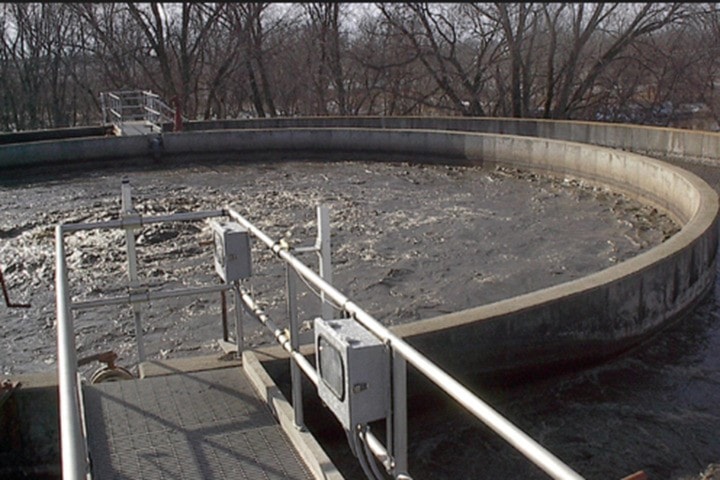By Yolanda Ridge, Rossland News
The thing about sewage—it happens, and someone’s got to deal with it.
Right now, Rossland lets it flow down the hill to the Columbia Pollution Control Centre (CPCC)—that industrial facility you’ve seen (and probably smelled) if you’ve ever visited the SPCA location behind Waneta Plaza in Trail.
As part of a centralized collection system servicing Rossland, Trail, Warfield, Rivervale and Oasis, the CPCC provides primary treatment to the domestic wastewater for approximately 14,000 people under the direction of RDKB environmental services.
Problem is, primary treatment (removing solids, disinfecting remaining liquid with chlorine gas, and then de-chlorinating it prior to discharge into the Columbia River) is not enough; Federal standards mandate secondary treatment (the additional use of bacteria to remove degradable organic matter).
Preventing the RDKB from being fined in violation of wastewater regulation is the existence of a Liquid Waste Management Plan (LWMP). Stage 1 of this plan was completed in 2008 and the environmental services department is “currently waiting for a few items to be sorted out prior to completing the stage two process,” explained Bryan Teasdale, manager of infrastructure and sustainability.
As it stands, the LWMP committee is set to consider two different options: Expand and update the existing CPCC at an estimated cost of $20-26 million; or construct a new secondary treatment facility in a different location, near the Columbia Gardens next to the Trail airport, at a cost of roughly $40 million.
Until early this year, both options were being considered with and without the inclusion of Montrose and Fruitvale. But according to Teasdale, the Beaver Valley communities have now pulled out of the regional plan, electing instead to update their own stand-alone treatment facilities independently.
This development would appear to tip the balance in favour of updating the current site at reduced cost. But does that mean the LWMP is ready to proceed with the CPCC expansion plan?
Enter the City of Rossland, who, over the past month, has formally requested (again) the RDKB consider an alternative: a stand alone treatment facility for the mountain kingdom.
Why? Mayor Greg Granstrom, clearly in favour of Rossland gaining control over its sewage, provided several reasons:
• avoid the significant expense of replacing the long line from Rossland to Warfield, which has been suspect for a while;
• free up capacity in the pipes running from Warfield to Trail and through the central line that runs along Bay Street; and
• set up a system where Rossland pays for sewage treatment based on the amount of wastewater they actually discharge.
The last point has been a long-standing source of contention between Rossland and the RDKB. Under the current system, CPCC cost is divided between Trail, Rossland, and Warfield at a ratio of roughly 70-20-10 (with a separate subcontract to provide collection and treatment for the other communities).
Developed in 1967, this formula, likely derived from population distribution, does not take into consideration discharge from large companies and fails to acknowledge community efforts to reduce output—such as the large amount of money Rossland recently spent upgrading their collection system to keep the wastewater in the pipes and the ground water out.
The City of Rossland has gone to arbitration to have the formula adjusted in the past. Ultimately, the mayor would like to see the cost assessed based on the amount of sewage each area produces. But adding accurate flow meters to the system has proved problematic and expensive.
There is no doubt that a stand-alone treatment facility would solve this problem (and others) but at what expense to the taxpayer?
Rossland is asking the RDKB to do a feasibility study, explains the mayor. And in fact, the city has offered to contribute to the cost of the analysis and talk to some landowners about the possibility of doing percolation tests.
“But we’re a long way off from having our own facility,” said Granstrom. “We do not even know if any suitable land exists.”
Whether the RDKB will allow treated wastewater to be discharged into Trail Creek remains to be seen, he added.
The city is not looking to pull out of the RDKB system, clarified Granstrom, “but we think there might be money to be saved for tax payers throughout the region.”
The Rossland stand-alone plant was ultimately dropped as an option during stage one of the planning process, explains Teasdale, “but the City of Rossland has requested that the RDKB steering committee briefly re-visit this … so we probably won’t have another meeting until we finish with our current review of the city’s request.”
Councilor Kathy Wallace, Rossland’s representative on the LWMP committee, said she will provide further information in the not so distant future.
For now, it’s out of sight, out of mind—at least until Rossland and the rest of the RDBK figures out how to deal with its sewage properly.
